Quick Start with KubeSphere 
Prerequisites
1. Install the Meshery command line client, mesheryctl .Meshery is the open source, cloud native management plane that enables the adoption, operation, and management of Kubernetes, all kinds of cloud native infrastructure, and their workloads.
This tutorial walks you through an example of deploying Meshery from the App Store of KubeSphere.
Prerequisites
- Please make sure you enable the OpenPitrix system.
- You need to create a workspace, a project, and a user account (
project-regular) for this tutorial. The account needs to be a platform regular user and to be invited as the project operator with theoperatorrole. In this tutorial, you log in asproject-regularand work in the projectdemo-projectin the workspacedemo-workspace. For more information, see Create Workspaces, Projects, Users and Roles.
Hands-on Lab
Perform the following steps in order:
1. Deploy Meshery from the App Store
- On the Overview page of the project
demo-project, click App Store in the upper-left corner. -
Search for Meshery in the App Store, and click on the search result to enter the app.
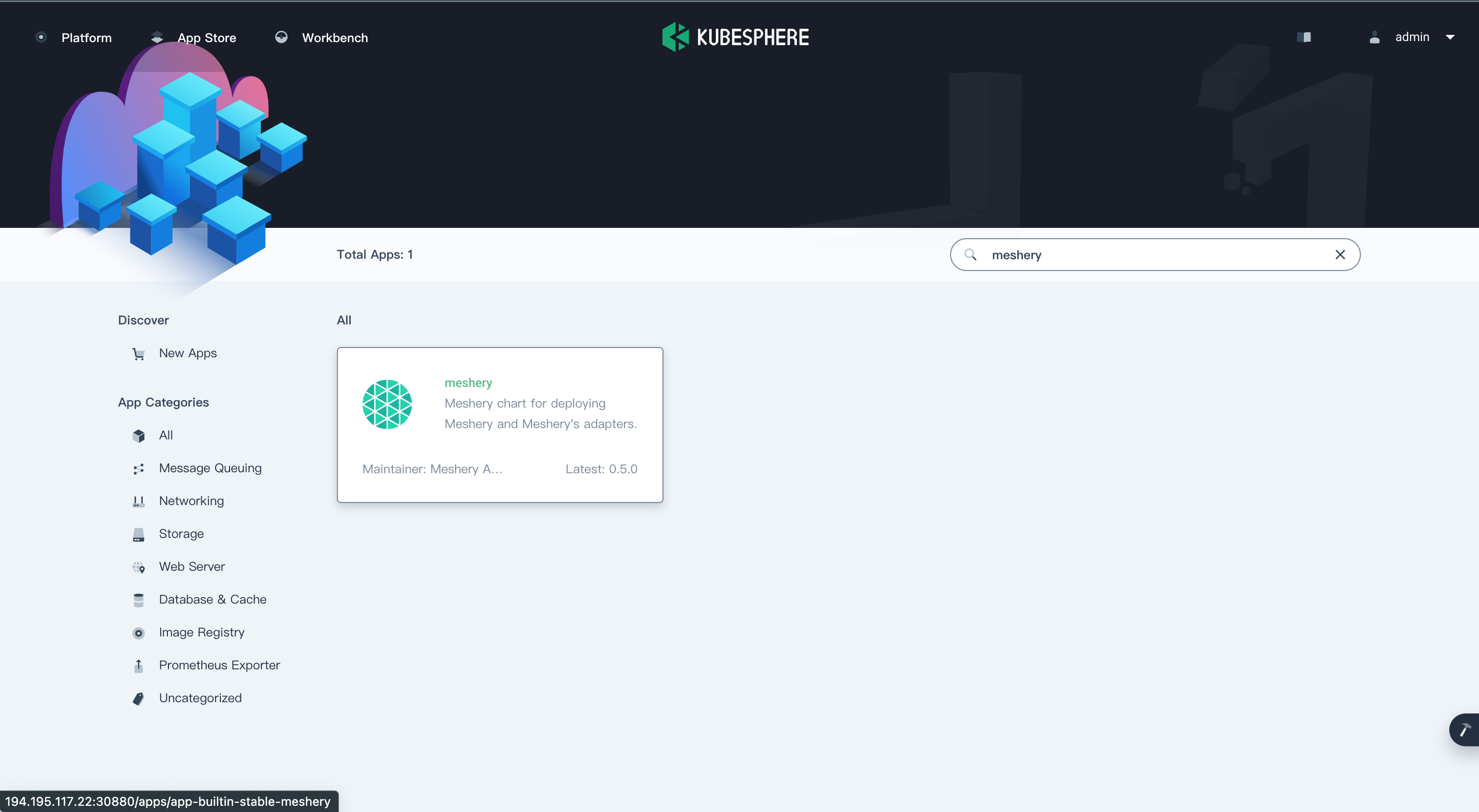
-
In the App Information page, click Install on the upper right corner.
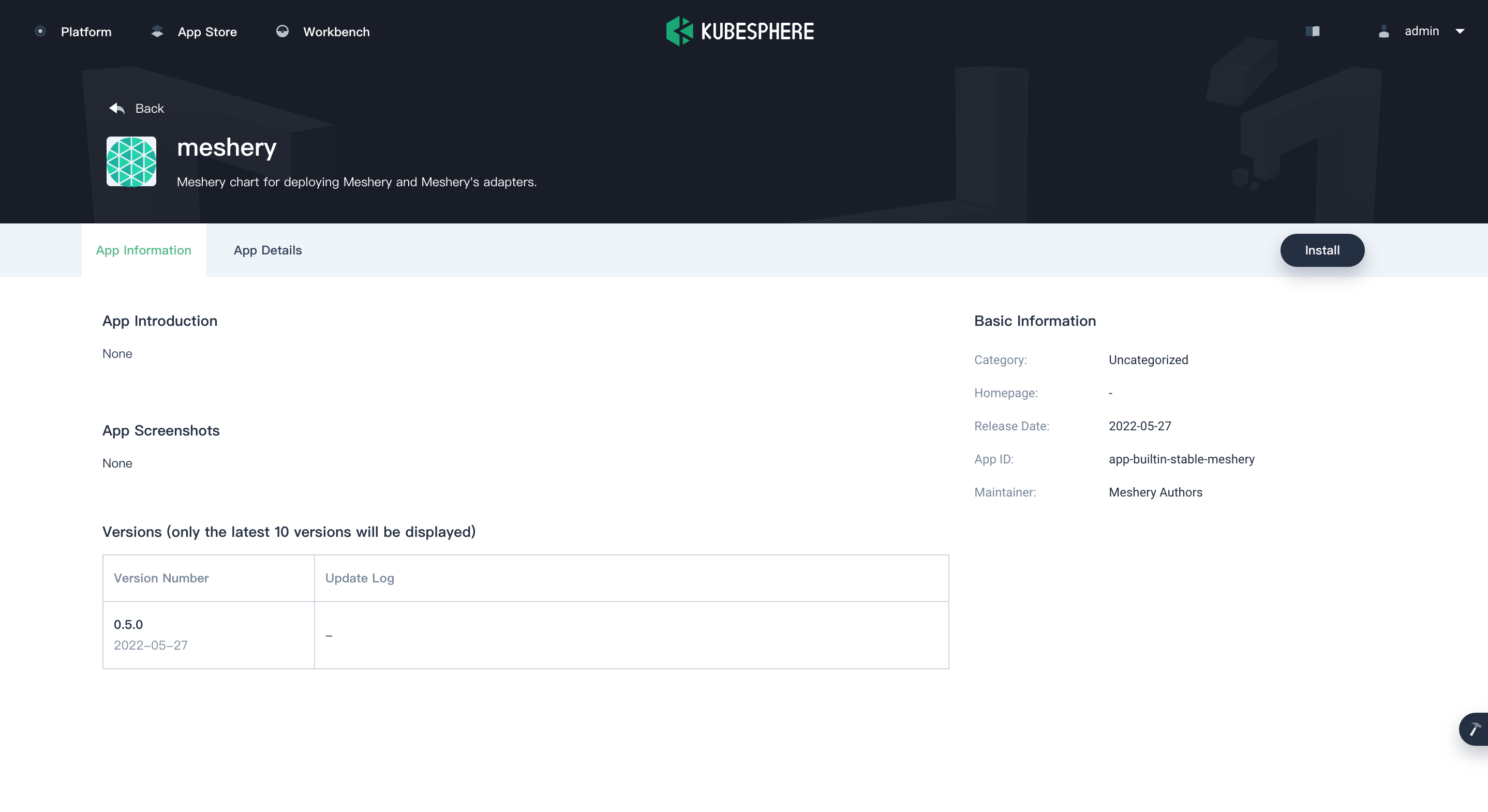
-
In the App Settings page, set the application Name, Location (as your Namespace), and App Version, and then click Next on the upper right corner.
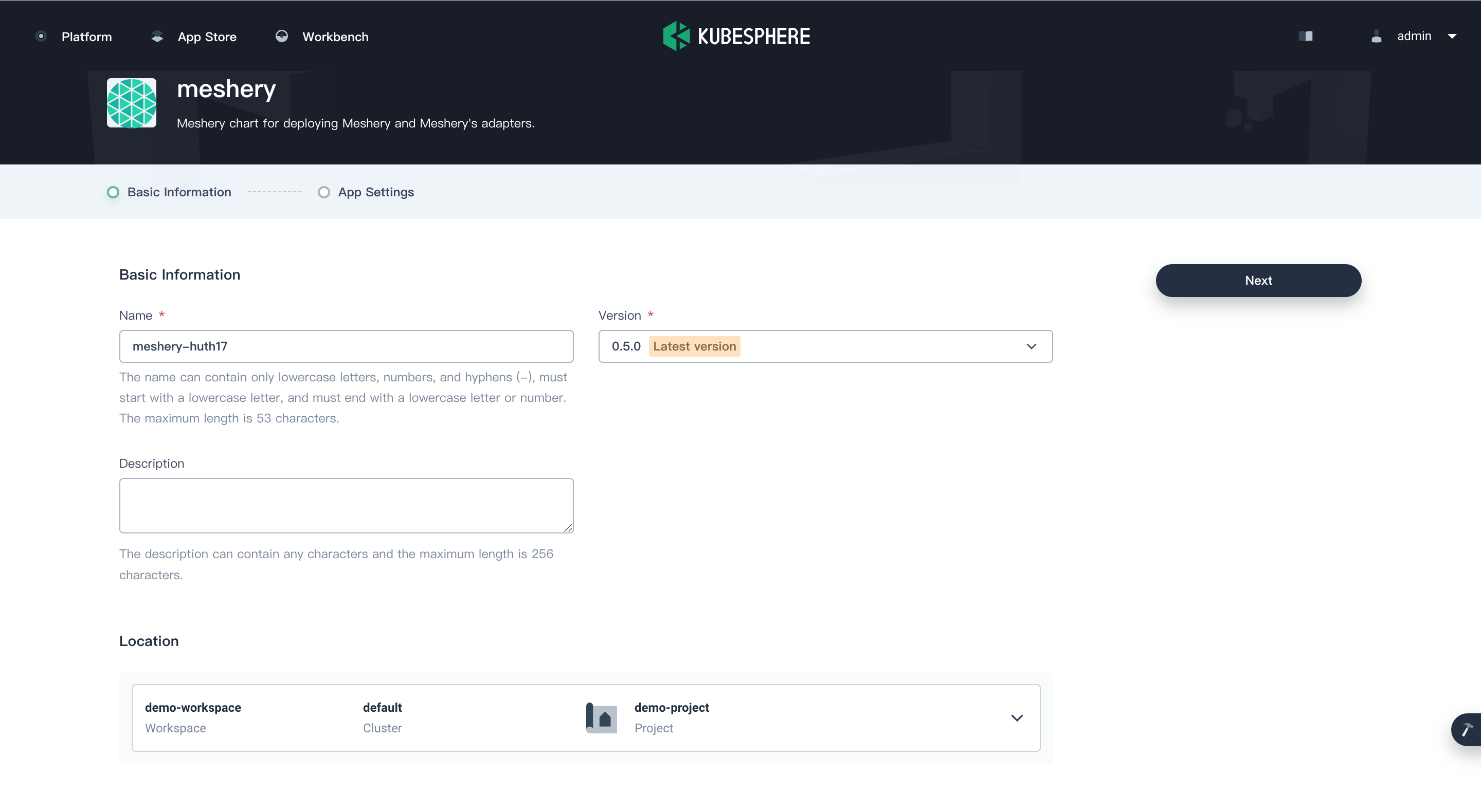
-
Configure the values.yaml file as needed, or click Install to use the default configuration.
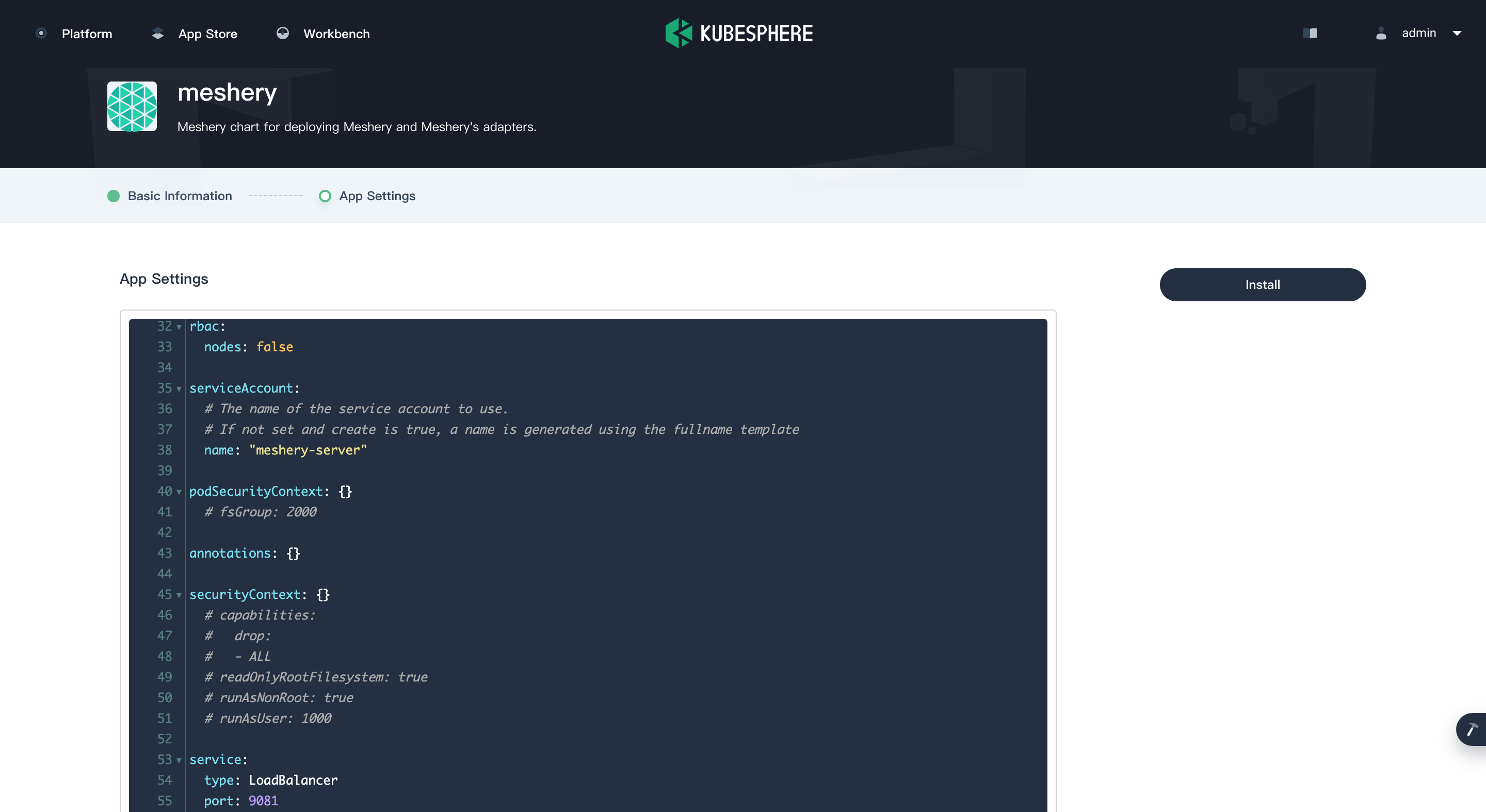
-
Wait for the deployment to be finished. Upon completion, Meshery will be shown as Running in KubeSphere.
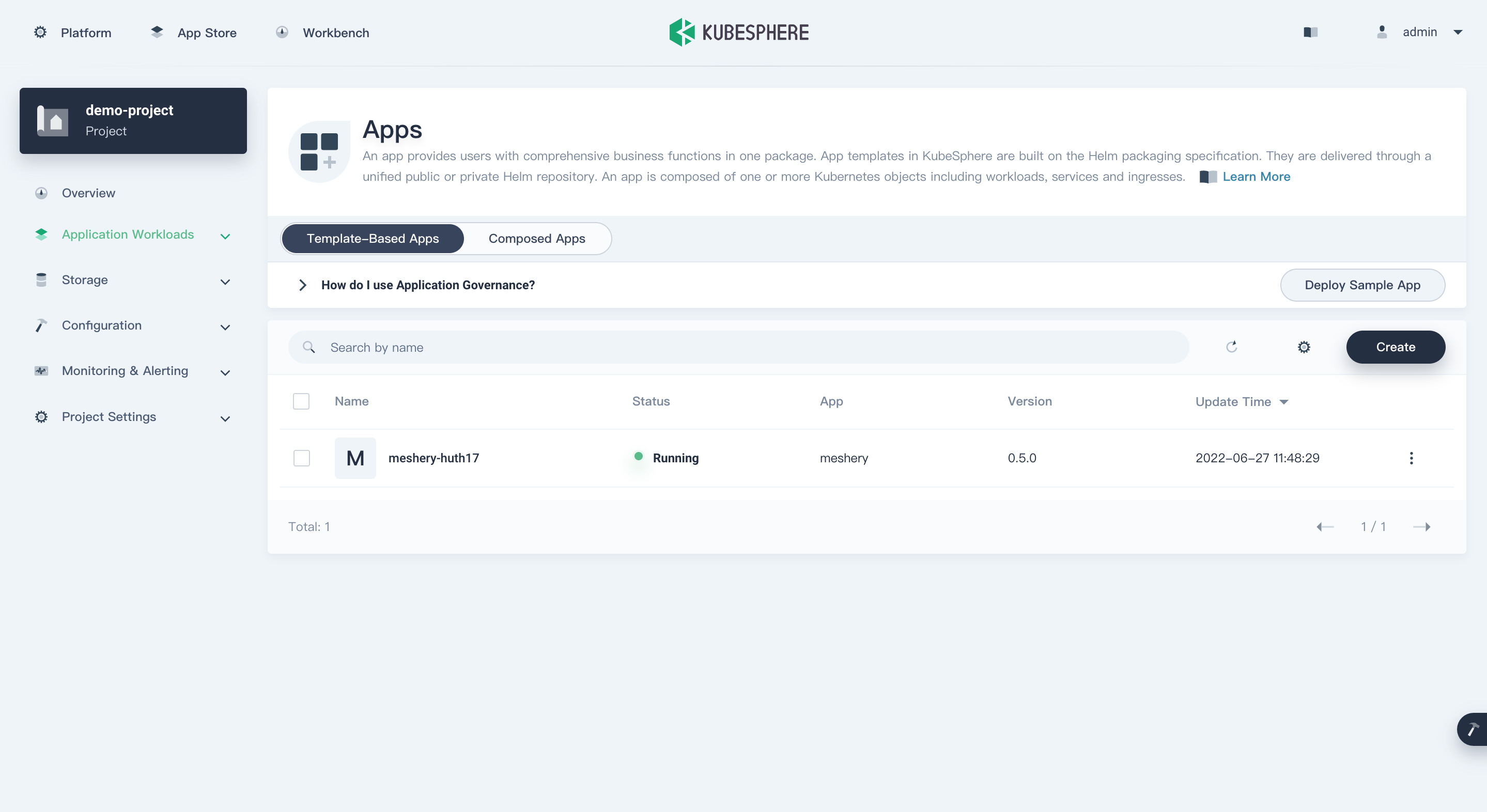
2. Access the Meshery Dashboard
- Go to Services and click the service name of Meshery.
-
In the Resource Status page, copy the NodePort of Meshery.
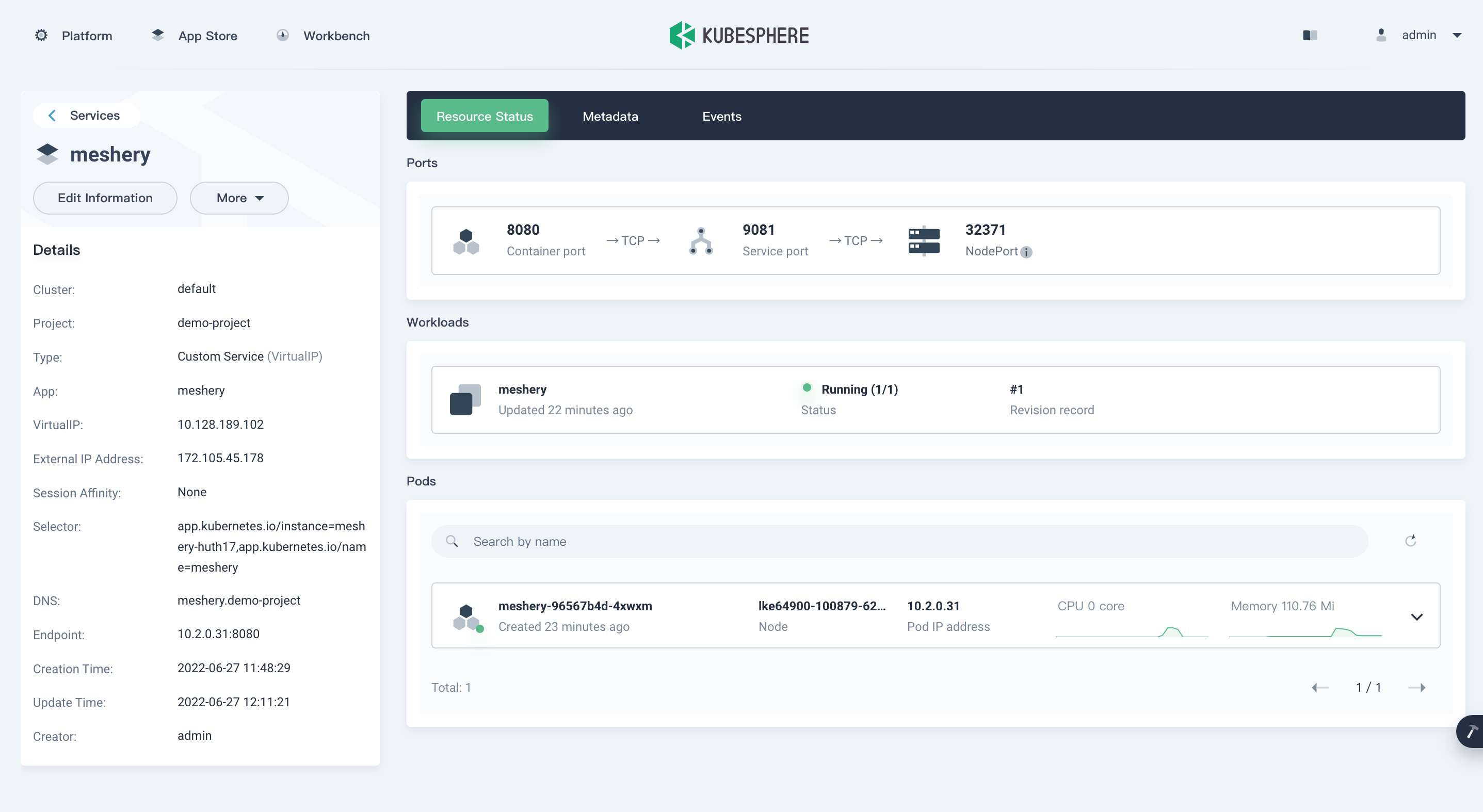
-
Access the Meshery Dashboard by entering ${NodeIP}:${NODEPORT} in your browser.
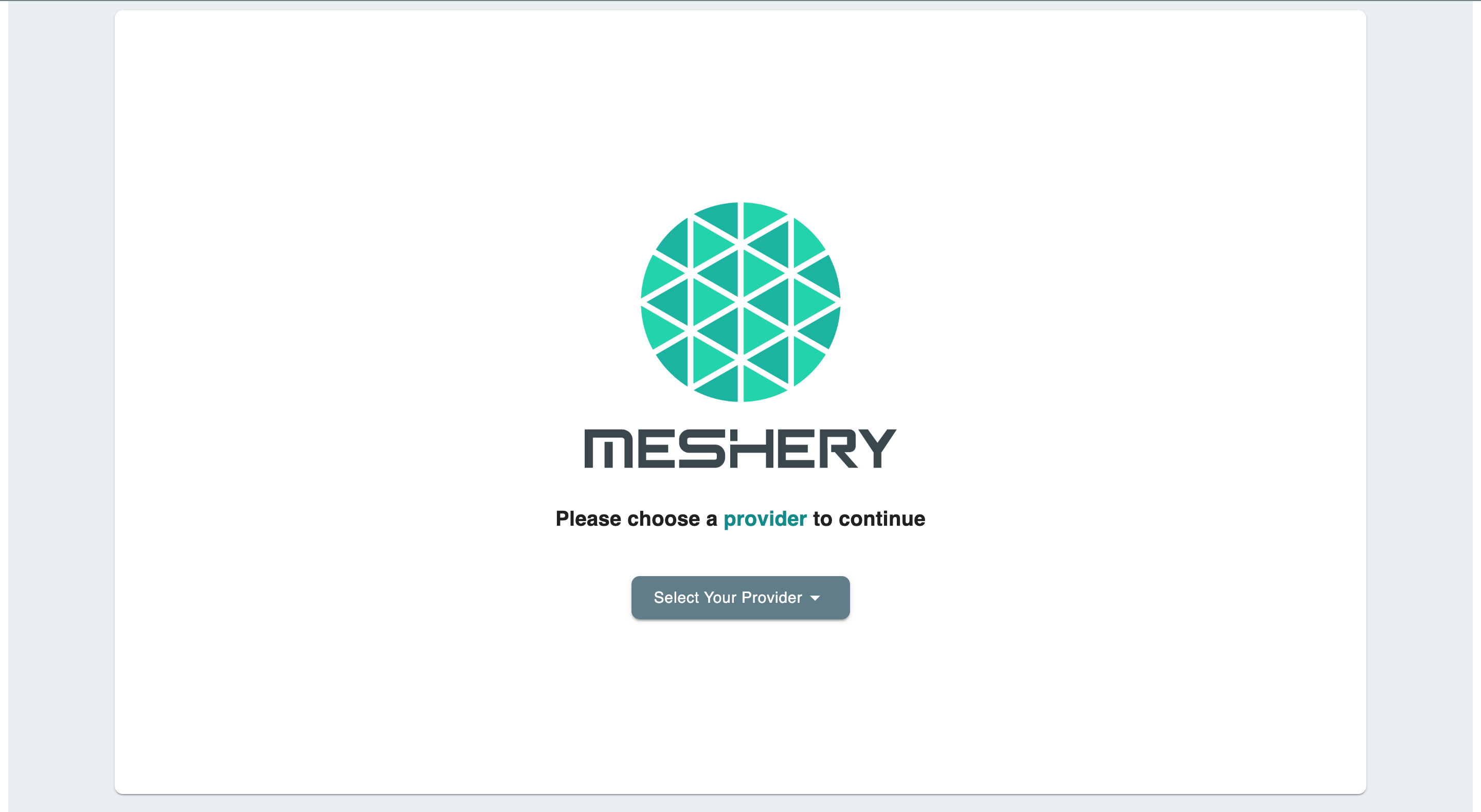
Recent Discussions with "meshery" Tag
- Dec 21 | Newbie Alert, looking forward to make fresh contributions for meshery
- Dec 20 | How to Test the Cytoscape Polygon Compatibility of Shapes build in shapes.meshery.io and Import it in Kanvas
- Dec 19 | Meshery Development Meeting | December 17th, 2025
- Dec 11 | Meshery Development Meeting | December 10th, 2025
- Dec 03 | Meshery Development Meeting | December 3rd, 2025
- Oct 30 | How to Test Sistent Components for Development Environment
- Nov 26 | Meshery Dev Meet November 26th
- Nov 19 | Meshery Development Meeting | Nov 19th, 2025
- Nov 18 | Meshery Development Meeting | November 12th, 2025
- Nov 18 | Meshery Development Meeting | November 5th, 2025